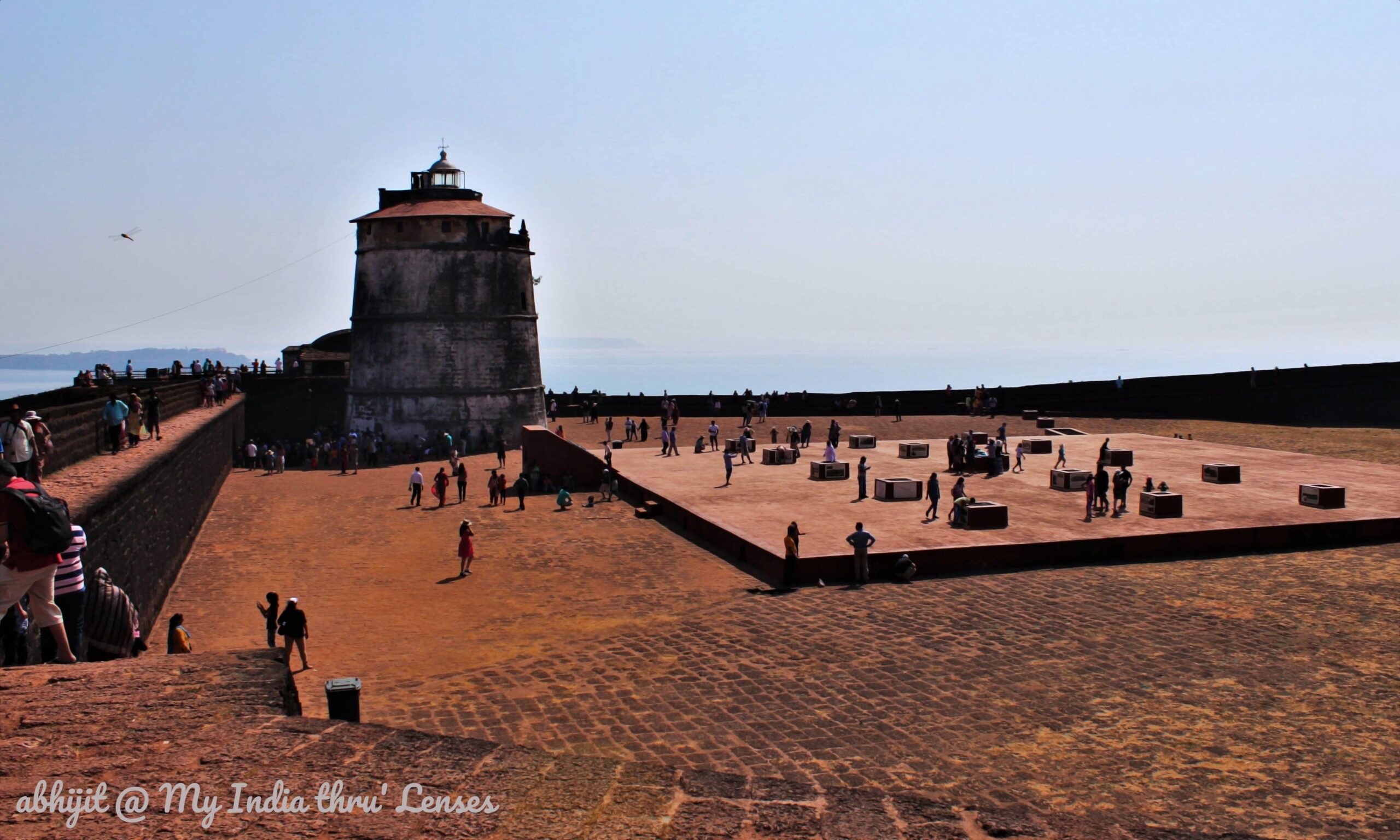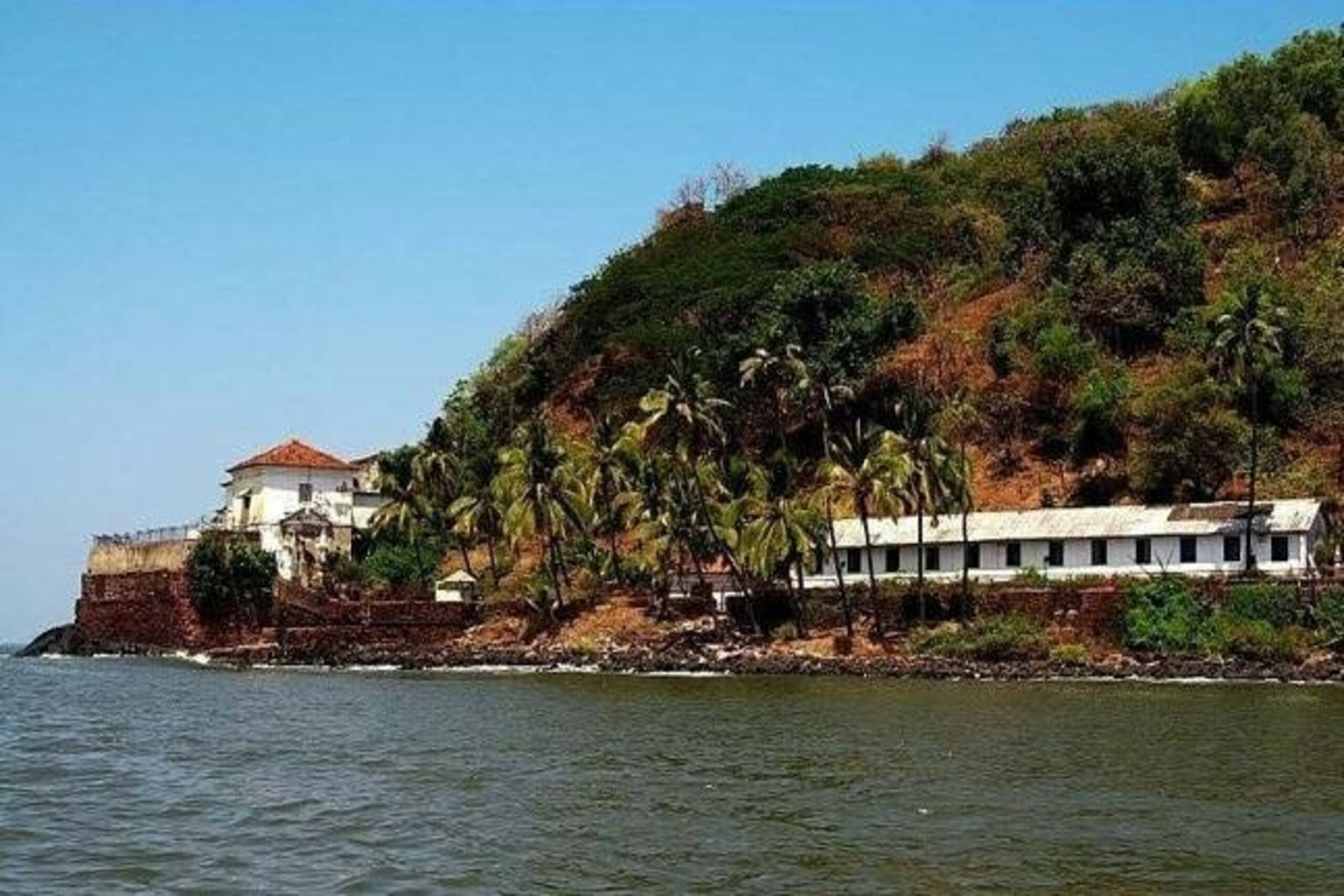Reading Time: 7 mins

Although Goa has now become synonymous with beaches, parties & modernity, the heart of the smallest state of India lies in its rich history & cultural heritage. There are several things to explore in Goa other than the beach shacks, desks & nightclubs. Goa, which was a Portuguese colony for as long as 450 years, presents an excellent blend of Indian & Portuguese cultures. History lies almost everywhere in the state. Every corner of the old churches and forts of Goa have snippets of untold stories.
Around 100 years after Portuguese conquest of Goa (1510 CE), the Fort Aguada was built to provide a formidable defence to the empire, especially against the Dutch & the Marathas. The majestic fort, strategically located on Sinquerim Beach at the confluence of Mandovi River & the Arabian Sea, proved to be a strong foothold for the Portuguese - the fort could never be conquered since its completion in 1612 CE. Other than a defence base, the fort also served as a watering station for the ships passing by and thus the name ‘Aguada’, meaning “Watering Place” in Portuguese. Today, Fort Aguada is one of the top tourist attractions of Goa. The square-shaped citadel at the hilltop offers one of the most spectacular views of the Arabian Sea.
It was quite late last night! We were in Goa for a week-long holiday during the last week of December and Goa was already into party mood. Last year’s Goa trip was not our 1st visit to Goa and we decided to go by train, as we wanted to experience the train journey from Mumbai to Goa, which is one of the top train journeys in India. We boarded Mandovi express that departs from Mumbai CSTM at 7.10 am. While it was a nice journey through green hills & valleys, tunnels and a few streams & waterfalls, the train was around 2.5 hours late, reaching Madgaon at 9.00 pm. We rushed to the taxi bay to book a taxi and when we reached our resort at Calangute, it was almost 10.00 pm. Later, we realized that it would have been better to get down at Thivim station as Calangute is much closer to Thivim. Whatsoever, the 14-hour train journey could not stop us joining the party that was arranged by our resort on 25th December night and we continued until 2.00 am.
Getting up late next day, we planned for sightseeing after a sumptuous breakfast at the resort. In our list were the beaches of North Goa, Mae De Deus Church and Fort Aguada - the 400-year-old massive Portuguese fort has always been one of the prime attractions of Goa and a delight for any history buff.

SHORT HISTORY OF AGUADA FORT
Built over the period 1609 - 1612 CE, Aguada was a crucial fort that used to provide Goa’s Portuguese colony a strong defence against any movement through the waters & the nearby areas. The location of the fort was of great strategic importance, especially in defending attacks from the Marathas & the Dutch.
In 1604 CE, a Dutch squadron approached the Mandovi River. The existing Portuguese forts (Reis Magos, Gaspar Dias & Cabo forts) proved to be ineffective in defending the attack and the Dutch succeeded in destroying quite a number of Portuguese ships. The Dutch forces were finally pushed back, but they settled at the entrance of the river, blocking the harbour and preventing the entry or departure of all the ships.
The Portuguese were well aware of the fact that their naval strength was not enough to face the Dutch in an open sea battle and a strong defence system was necessary to keep the Dutch at a safe distance. Thus in 1609 the Portuguese administration started the construction of this massive fort on the headland. Construction was complete within 3 years. During this period, Portugal was ruled by Catholic King Dom Philippe, while the Viceroy of Goa was Ruy Tavara. The Municipality of Goa supervised the construction work of the fort. It’s said that the municipality used to levy 1 percent duty towards providing protection to the ships approaching the fort. The design of the fort was laid down by the Italian military architects employed by the Portuguese government in Lisbon.

LAYOUT & DEFENCE SYSTEM OF THE FORT
As we started late, it was almost 1.00 pm when we reached Aguada Fort. The fort is more or less square-shaped with bastions for artillery placed on each of its sides at regular intervals. Three sides of the fort are strongly defended by a moat followed by extremely thick fortification walls (5m high x 1.3m thick), while the fourth side (back side or river side) faces out on the steep slope towards the river. We crossed the moat (totally dry now) through a narrow bridge. Just inside the gate there is a steep ramp with sharp curve. It’s easily understandable that with all such arrangements, it was extremely difficult for any invader to enter the fort in those days. Close to the main gate, we also noticed a staircase going downwards, which was locked.
We moved up to the open area. Even though it was the last week of December, the weather was quite hot & humid. Being the peak season, the place was crowded with tourists, many of whom were busy in taking selfies.
The back side of the fort provides breath-taking view of the Arabian Sea, giving me plenty of opportunities to press the shutter of my DSLR. On this side, there was an outer wall alongside the river, fragments of which can still be seen. On the highest point of the headland, there is a citadel, which is linked by a passage to the riverside for use during any attack or siege. The bastions are arrow-shaped with rounded corners. The fort was once grandstand of 79 cannons.

FRESH WATER STORAGE
Other than defence, the fort also used to supply fresh water to the ships that used to stop by. The capacity of the underground water storage chamber was 2,376,000 gallons, one of the biggest freshwater storages in Asia in those days. The fort is actually divided into two segments: the upper segment acted as fort as well as watering station, while the lower segment served as a safe berth for the ships.

Two most important things inside the fort are the lighthouse and the Aguada jail. While the jail is closed for public visit for obvious reasons, one can easily visit the lighthouse, which stands at one of the corners of the open area.
AGUADA LIGHHOUSE
The 4-storeyed lighthouse inside the fort is the oldest of its kind in Asia and a must-see. It was erected much later in 1864 to guide the ships into safe harbour. At the initial stage, it used to emit a beacon of light in every 7 minutes. Later, the cycle-time was changed to 30 seconds. It was abandoned in 1976. The lighthouse has a spiral staircase with a metal ladder. Visitors are allowed to climb the stairs and enjoy the scenic beauty.

AGUADA JAIL
In the mid-20th century, during Salazar (António de Oliveira Salazar) administration in Portugal, the lower part of the fort was converted into a prison. India gained its independence from the British in 1947, however, Salazar refused to relieve Goans from Portuguese statehood and a battle for freedom was evident. Several freedom fighters or even the peaceful protestors were thrown in the depths of Aguada jail and tortured, until the liberation of Goa (1961). After annexation of Goa to the Republic of India, the prison served as Goa’s Central Jail and criminals, mainly accused of narcotics-related offences & trafficking, used to be imprisoned here. The Central Jail has always caught the attention of the tourists, not only because of its heritage, but also due to its interesting location overlooking the sea. A few years back, realizing the tourism potential of the place, the state government tourism board has decided to convert the jail into a museum. One of the major objectives of the government is to highlight Goa's freedom struggle through various displays and light & sound shows.
At present, several parts of the old fort have become inaccessible. Some of the places including the Aguada jail are closed for public visit. A part of the fort is taken over by the Taj Group for a luxury resort - Taj Fort Aguada Resort & Spa. The remaining portion of the fort that is open for general public is, however, worth a visit. It will take you back to history.


INFO FOR THE TOURISTS
- Location: Aguada-Siolim Road, Sinquerim Beach, Candolim, Goa, India
- Entry Fee: NIL
- Timings: 9.30 am to 6.00 pm/ all days
- Approx. duration of visit: 2 hours
INFO SOURCE
- Wikipedia
- Fort Aguada, Goa, Travelogy India
- Fort Aguada, GoaHolidayHomes.com
- Fort Aguada: Symbol of Strength, Aditi Shah, Feb 5th 2019, Live History India
View related posts:
Dudhsagar - The Milky Waterfall of Goa
The Churches of Goa | Witness a different face of the place at these Heritage Sites